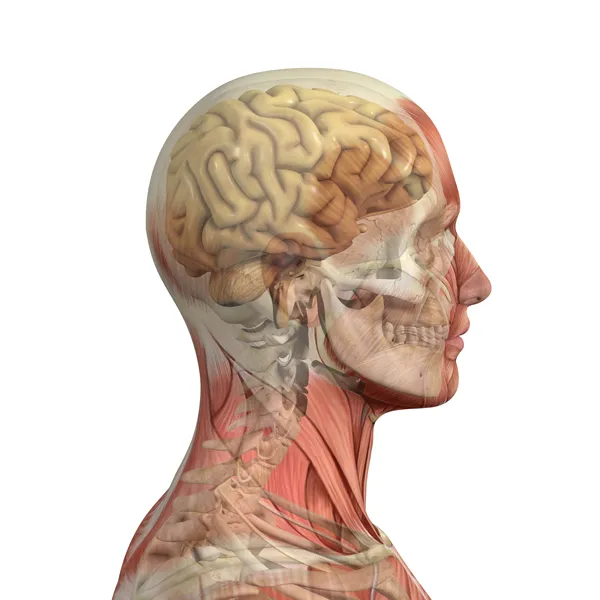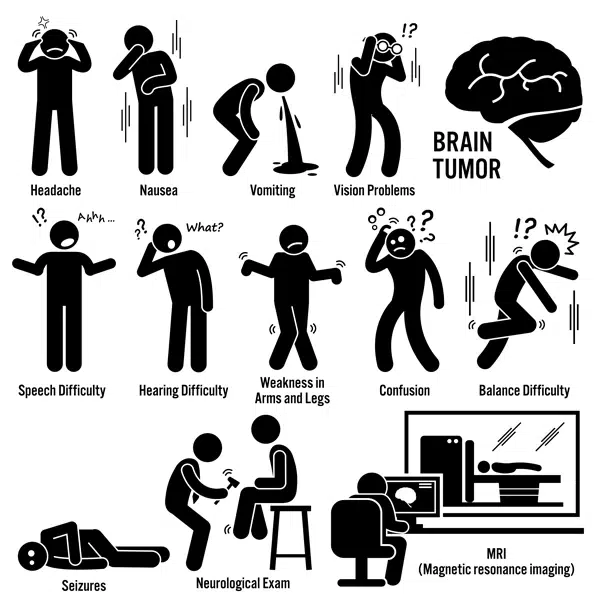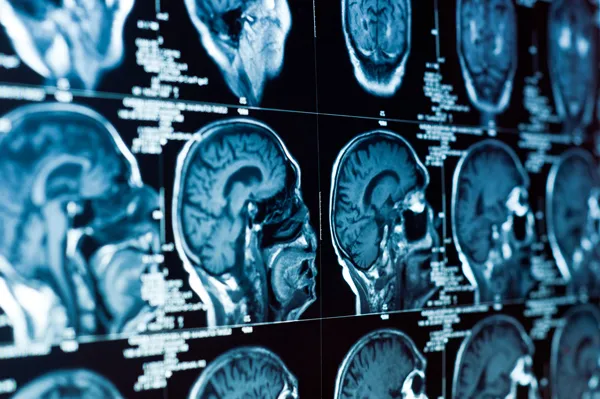What is a brain tumor, and how does it affect the brain?

A brain tumor is an abnormal growth in the brain, causing compression and loss of important functions.
The brain is different from other organs since it has an external exoskeleton in the form of the skull. The skull protects the brain from outside trauma and provides optimal environment for its function. An important feature of the skull is its constant volume. Another crucial feature of the brain is its tightly regulated intracranial pressure. Cerebro-spinal fluid secretion and absorption is the main mechanism responsible for maintaining normal pressure in the brain. Any deviation from normal intracranial pressure causes pain and serious functional disturbances.
A growing tumor has to come at the expense of losing the volume of other components in the cranial cavity. Therefore, the brain tissue, cerebrospinal fluid and blood in the brain circulation have to retract to make extra room for space occupying tumor. This mechanism is called compensation and at this stage the intracranial pressure is not elevated. The compensation phase may last quite long dependig on tumor size and growth speed. Slowly growing tumors allow the brain to adapt whereas rapidly advancing tumors tend to overcome compensatory mechanisms quite fast. Once compensation mechanisms have been exhausted the intracranial pressure rapidly rises leading to life threatening disruptions of vital brain functions.
Another specific aspect of the brain is the lack of pain receptors. Therefore, brain compression by expanding tumor does not cause any pain pain. On the other hand, the dura mater (the main brain cover) has numerous pain receptors. Headache related to brain tumor originates not from the brain itself but from the dura. There are two mechanisms responsible for tumor associated pain generation. Pain is caused either by elevated intracranial pressure compressing and stretching the dura mater or due to direct invasion of the dura by tumor.
How many brain tumor types are there?
There are so many types of brain tumors it is virtually impossible to have a single feature to describe all of them. From practical point of view it is convenient to classify brain tumors according to origin, type, location and malignancy degree.
Origin
Primary
Primary tumorus originate from the brain tissue. Brain tissue or stricly speaking neural tissue consists of various cell populations. The main cell in the nervous system is neuron. Neuron is so highly specialized that it has lost the ability to divide and multiply. Thus brain tumors do not originate from neurons. However supporting cells like astrocytes, oligodendrogliocytes, ependymal cells etc. do have potential to divide and thus can cause brain tumors. These cells are collectively called gial cells and tumors originating from them is defined as glioma. Glioma is a collective term comprising many tumor types like astrocytoma, oligodendroglioma, ependymoma and many others. Gliomas originate adn grow inside of the brain. In many instances brain tumors may not originate from the brain itself, rather from surrounding and supporting tisuues. Meningioma is very good example of such tumors. It is developing from arachnoid cap cells. Most meningiomas develop outside of the brain in the dura mater and compress the brain from from outside. However, they are considered primary brain tumors.
Metastatic
Metastatic tumors spread to the brain from other places. Cancer is one of the most important health issued worldwide. With aging population the incidence of cancer is growing. In addition modern treatment options allow cancer patients to live longer. However, frequently new treatment do not cure cancer rather slow down its progression. Inevitably the number of people with cancer in society is rising. Brain is provide a very good eviroment for cancer metastasis. The blood flow to the brain is very high making the brain one of the most frequetn sites for metastasis. Common tumors spreading to the brain are lung cancer, breast cancer, melanoma (type of skin cancer), testicular cancer and many others.
Location
Inta-axial
Inta-axial tumors are located inside of the brain. Most tumors originating from the brain tissue are intra-axial tumors. Gliomas are typical examples of such tumors. These tumors may or may not have distinctive borders with brain tissue.
Exta-axial
Exta-axial tumors are located outside of the brain. Meningiomas are typical examples of such tumors. Generally (but not always) these tumors are well demarcated from the brain making surgical removal relatively easy.
Supratentorial
Supratentorial tumors are located above the tentorium cerebri. These tumors are further subdivided into specific areas of origin – frontal, temporal, parietal, occipital, insular, thalamic, ventricular, etc.
Infratentorial
Infratentorial tumors are located below the tentorium: usually in/around the cerebellum, brainstem, and fourth ventricle.
Skull base
Skull base tumors are located below the brain at the base of the skull.
Superficial
Superficial tumors are located close to or in the brain’s outer surface.
Deep
Deep tumors are located in deep, hard-to-reach areas of the brain.
Type
Type of a tumor is based on the cell origin. For exampel tumor originating from astrocyte is called astrocytoma. World Health Organization (WHO) classification is the most updated and comprehensive pathological classification of brain tumors. Common brain tumor types are astrocytoma, oligodendroglioma, ependymoma, glioblastoma multiforme, meningioma, craniopharyngioma, schwannoma, etc.
Malignancy degree
According to the WHO classification, there are four grades of malignancy (I-IV) for primary brain tumors. Grade I is the most benign, and IV is the most malignant type. It is well known that the grade of the tumor is the most important factor affecting the outcome of treatment.
What are the symptoms of brain tumors?

Brain tumors may present with a variety of symptoms depending on location, size, and growth rate. Benign tumors are usually slowly growing and allow the brain to adapt to the compressive effect. They may reach very large sizes before producing any symptoms. Malignant brain tumors, on the other hand, grow aggressively and tend to cause edema in surrounding tissue. Yet even malignant tumors do not cause symptoms before reaching a particular size. Headache is the most frequent symptom of brain tumors. As discussed above it may be due to increased intracranial pressure or local invasion of dura.
Symptoms of brain tumors are divided into two groups
General symptoms
All tumor types can cause general symptoms. These symptoms are due to increased intracranial pressure. Headache, nausea, vomiting, blurred vision, and somnolence are frequently encountered symptoms.
Local symptoms
These symptoms due to local effects on a specific area. Weakness in arms and legs (hemiparesis), numbness (hemihypesthesia), visual disturbances (hemianopsia, ambliopia), seizures, dizziness, vertigo, hearing impairment, and many other symptoms are due to local effect of tumors.
How are brain tumors diagnosed?

Imaging of the brain is an essential step in establishing the diagnosis of brain tumor. MRI with contrast is the best modality to show the tumor and its relation with surrounding structures. In the vast majority of cases, standard MRI with contrast can provide information about the nature and location of tumor. In difficult cases, special MRI modalities like functional MRI (fMRI), diffusion tensor imaging (DTI), MR spectroscopy (MRS) can provide invaluable details and help to formulate ideal strategy. In some cases, CT scan can be very useful. It is particularly effective for demostrating the bone structures (and bone destruction) and calcifications.
Laboratory tests are not used frequently for brain tumor diagnosis and are utilized in very specific and rare instances. For example, pituitary adenoma evaluation involves analysis of elevated blood hormone levels.
Pathological analysis of tumor tissue is the most important aspect of the diagnosis. No test is as reliable as microscopic examination of the tumor. For this reason, obtaining and analysing tissue samples are the key steps of brain tumor management.

